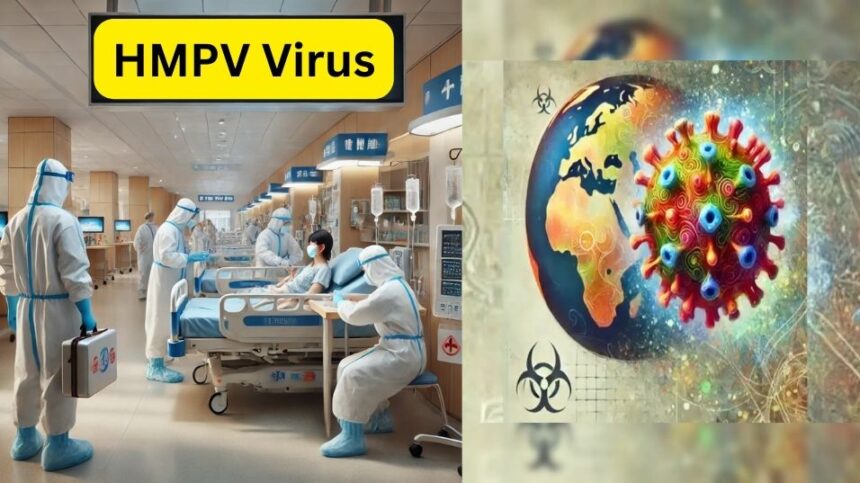The Human Metapneumovirus (HMPV) Virus outbreak in China has raised significant health concerns globally, with countries on high alert. As the situation unfolds, here is everything you need to know about the virus, its symptoms, treatment options, diagnosis, and more.
WHO Forecasts that there will be 35 Million New Instances of Cancer by 2050
What is HMPV ?
HMPV, or Human Metapneumovirus, is a respiratory virus first identified in 2001. It primarily affects the respiratory system, causing symptoms that can range from mild to severe. Vulnerable groups include young children, the elderly, and individuals with weakened immune systems.
Researchers Examine Urine-Based Test for Early Detection of Ovarian Cancer
Symptoms of HMPV
HMPV symptoms are similar to those of the flu and other respiratory illnesses. Common symptoms include:
- Cough
- Fever
- Runny or Stuffy Nose
- Shortness of Breath
- Sore Throat
In severe cases, complications like bronchitis or pneumonia may develop, particularly in high-risk groups.
Obesity’s Role in Type 2 Diabetes Onset it’s Causes and Symptoms
How is HMPV Diagnosed?
HMPV diagnosis typically involves the following methods:
- Clinical Assessment: Doctors evaluate symptoms and medical history.
- Laboratory Tests: Nasal or throat swabs are used to detect the virus through molecular testing techniques such as PCR (Polymerase Chain Reaction).
- Chest X-rays: In severe cases, imaging may be performed to check for pneumonia or other complications.
Treatment for HMPV
Currently, there is no specific antiviral treatment for HMPV. Management focuses on alleviating symptoms and supporting recovery:
- Rest and Hydration: Essential for recovery.
- Over-the-Counter Medications: To manage fever, nasal congestion, and pain.
- Hospitalization: Required in severe cases where oxygen therapy or mechanical ventilation may be needed.
How Does HMPV Spread?
HMPV spreads through respiratory droplets from infected individuals, similar to how colds and the flu spread. Transmission can occur via:
- Coughing or Sneezing
- Close Contact: With infected individuals.
- Touching Contaminated Surfaces: Followed by touching the face, especially the mouth, nose, or eyes.
Preventive Measures
To minimize the risk of HMPV infection, follow these preventive measures:
- Practice Good Hygiene: Wash hands regularly with soap and water for at least 20 seconds.
- Use Masks: Especially in crowded or high-risk environments.
- Avoid Close Contact: With individuals displaying symptoms of respiratory illness.
- Clean Surfaces: Disinfect frequently touched objects and surfaces regularly.
Is HMPV a Cause for Alarm?
While HMPV has caused concern due to its similarity to other respiratory viruses, including COVID-19, health experts stress that it is a manageable condition. Unlike COVID-19, HMPV is not associated with widespread outbreaks or high mortality rates. However, vigilance is essential, particularly for vulnerable groups.
FAQs on HMPV
Q1: Can HMPV lead to a pandemic?
A: No, HMPV has a well-documented history and is less likely to cause a global pandemic compared to novel viruses like COVID-19.
Q2: Who is most at risk of severe HMPV infection?
A: Young children, the elderly, and immunocompromised individuals are most at risk.
Q3: Is there a vaccine for HMPV?
A: Currently, there is no vaccine available for HMPV, but research is ongoing.
Q4: What should I do if I experience symptoms?
A: Consult a healthcare provider, especially if symptoms worsen or do not improve within a few days.
Conclusion
While the HMPV outbreak in China has raised concerns, the situation is under control with no indications of a large-scale emergency. By understanding the virus, its transmission, and preventive measures, individuals can protect themselves and their communities effectively.
Disclaimer
This article is for informational purposes only and should not be considered medical advice. Always consult a healthcare professional for personalized medical guidance.

